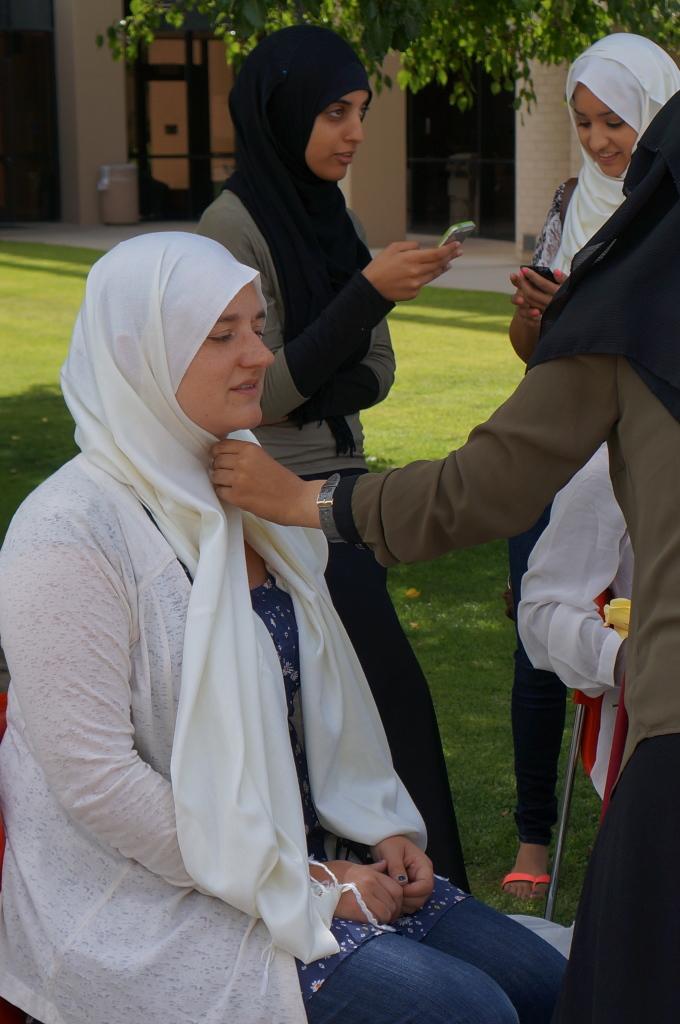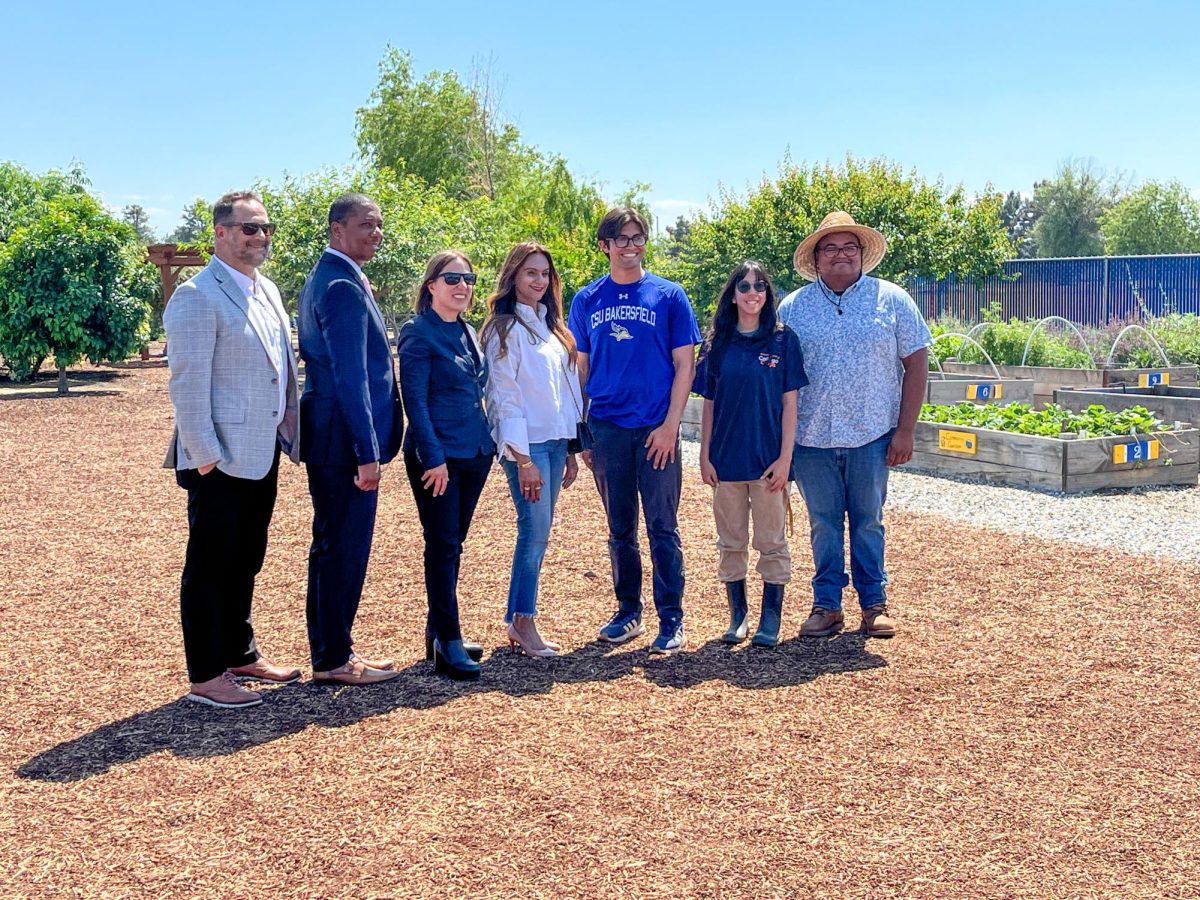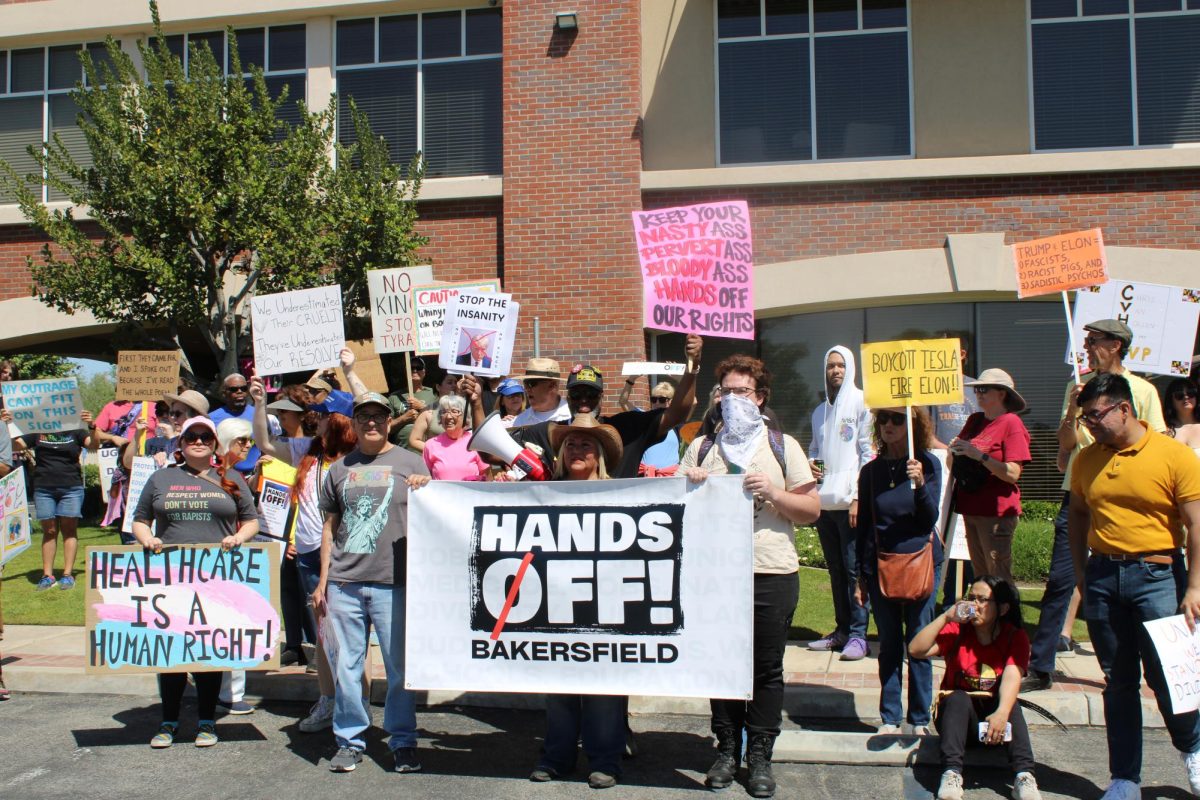Staff Writer
It seems to me that recently the trends in fashion have focused on a policy of skin, skin and more skin. Amidst the increasingly revealing styles found on campus, one group of students that upholds and promotes modesty is the Muslim Students Association (MSA). This past Thursday I participated in the Hijab Challenge. During this challenge MSA invited the public to sign a petition supporting Muslim women who follow their code of modesty, known as hijab. They also provided over a hundred free headscarves (an important part of hijab) for any woman who wanted to feel for herself what many Muslim women experience every day.
I was initially quite nervous to put on the hijab. I worried about being over heated, which was always a question in my mind as I saw Muslim women covered from head to toe in the dead of the Bakersfield summer, but thankfully the weather was almost cool on Thursday. I also worried about what people would think when they saw me wearing the hijab. As someone who usually struggles to stand out, I was for the first time terrified of not blending in.
My fears were at once confirmed and discarded when the scarf was finally put on my head. There was a definite change in how people viewed and responded to me. I found some hesitant to answer questions. Others stared as I walked the campus with my head covered. But instead of feeling embarrassed for myself, I felt sorry for those who were so fundamentally set in their prejudice that they would treat me differently because of a piece of clothing.
“We want people to see us for who we really are and not what we look like physically,” senior Goka Alshaif, president of MSA, said “It’s about modesty and individuality.”
To Muslim women hijab is a way of setting themselves apart from the world, making a statement that they are Muslim, and it is also a way for them to show devotion to God (Allah). According to Alshaif hijab is not just covering your head, “it is a way you carry yourself and dress,” and it applies to both men and women.
Hijab means different things to different people; some women choose not to wear the headscarf and focus instead on the inner hijab, behaviors of modesty and dignity. Others feel that wearing the scarf is an outer representation of an inner commitment to hijab and choose to express that. A woman who follows hijab closely wears the scarf around any man she is not related to.
With more than 150 Muslim students on campus and hundreds more accepting the Hijab Challenge that day, the remaining student body was sure to notice them. Freshman David Alvarez responded to my experience with the challenge by saying, “I would do it if I were a woman.”
In fact, much of the vocal response from those not participating in the challenge was quite positive. Student Danica Adoc said that people “have a right to wear the hijab. I don’t feel any discomfort about it.”
Sequoia Parrott, a senior who also took the Hijab Challenge, said, “Even though I personally am a Christian, I think it’s important to understand other religions and how they feel.” Parratt followed by stating, “I support their religious choice and I hope others will support my religious choices as well.”
If I learned anything from participating in the Hijab Challenge it was that promoting religious understanding at CSUB is important to create an equal and open campus life. No one should have to walk through her school and feel like she is being judged based on a religious choice. And for those existing prejudices to disappear, we who accept and support hijab and other religious lifestyles like it must be willing to speak up. Signing the pledge and taking the Hijab Challenge was one way I chose to do so. How will you?







